People
Dealer Dominique Lévy on How to Build a Business, Why Big Galleries Shouldn’t Subsidize Small Ones, and Why Art Fairs Need a Strong Identity
The dealer opened up to artnet News in a wide-ranging interview.
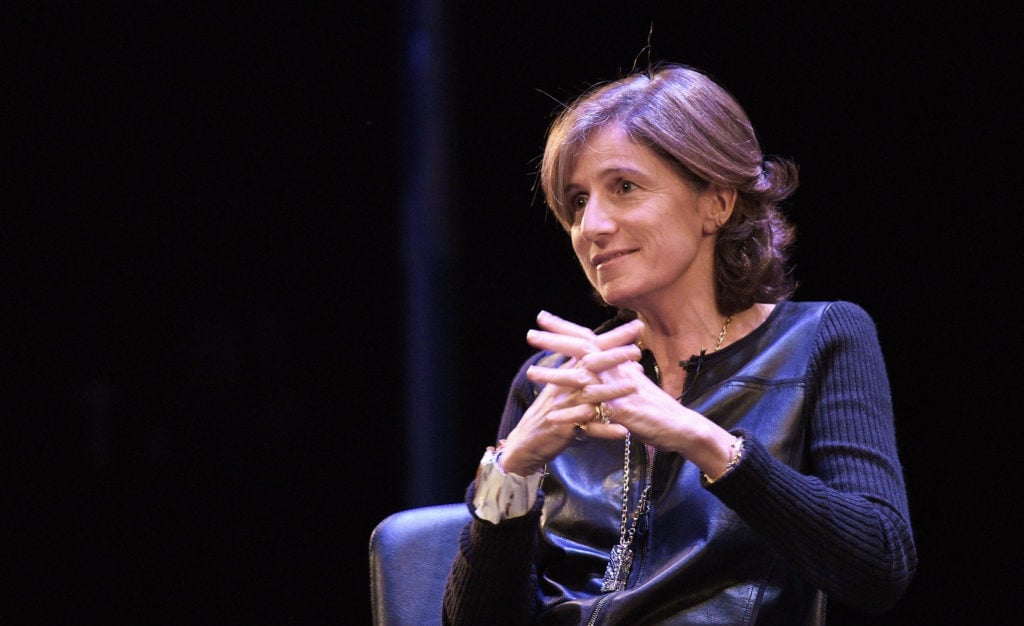
The dealer opened up to artnet News in a wide-ranging interview.

Kate Brown

Dominique Lévy has been in the news a lot lately. Her gallery, Lévy Gorvy, has not only been churning out critically acclaimed exhibitions, like its recent “Warhol Women” show in New York; on top of that, the business is growing. In the past two years, the gallery has expanded to Zürich and Hong Kong, tacking the two cities onto the gallery’s previous locations in New York and London.
Yet the gallery has maintained a strong sense of intimate scale. Poetry readings, music, experimental exhibitions, and a diverse roster of artists have all given Lévy Gorvy credibility as a space for discussion. At the same time, the gallery has been hiring power players like Sharis Alexandrian from White Cube and Bona Yoo from Lehmann Maupin to take on senior roles.
artnet News spoke to Dominique Lévy about how her gallery’s stable of artists what she thinks art fairs should be doing differently.
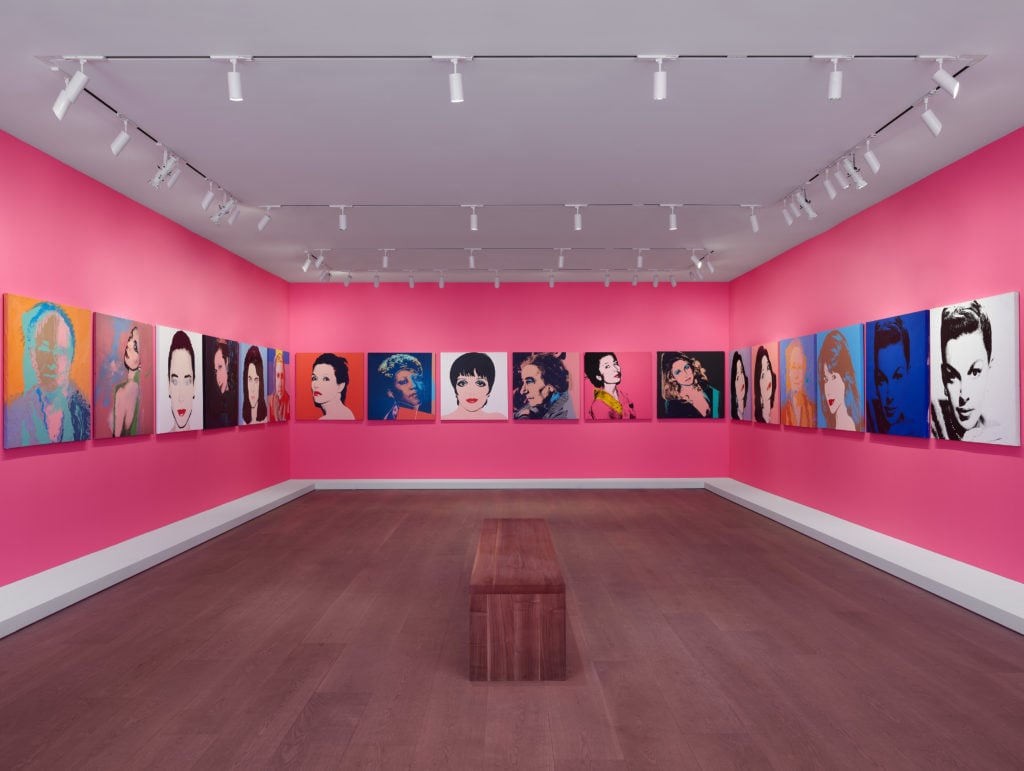
Warhol Women, Installation view, Lévy Gorvy, New York, 2019. Photo: Farzad Owrang. © 2019 The Andy Warhol Foundation for the Visual Arts, Inc. / Licensed by Artists Rights Society (ARS), New York.
You recently took on the German artist Jutta Koether, who was debuted at your booth at Art Basel this year. What made you decide to work with her? Can you walk me through your thought process?
Though I had been aware of her for a long time, I truly encountered her work at the Museum Brandhorst [in Munich], where she had a major exhibition called “Tour de Madame.” The show made me want to look at her work in much more depth. Koether believes in painting; her work is so anchored in history and it stands in reference to Old Masters. She is profoundly involved in the art world, and while she is a Conceptual artist and she has worked in installation and sculpture, at her core, she is a painter. I love the fact that she is so committed to the color red, which has so much contradictory significance—be it death, love, beauty, blood, war, peace, or violence. She has the courage to take that color and explore it.
In Basel, I showed Koether next to Post-war artists like Bruce Nauman because I think she has a connection to these kinds of artists. I also think, in general, that she is at an age where we can look back at her practice. We don’t tend to take on young artists, but rather mid-career artists and Koether falls into this category. While artists always look forward, it is the job of a gallery to look backwards at a career and put things in perspective.
Your program spans several generations of artists and a diverse range of positions. What would you say defines or unites the gallery program?
We focus on artists who are engaged in history. I am interested in artists who are mindful of their time and who are in constant dialogue with history and who are responsible socially and politically. I am interested in those who have strong opinions and an authentic practice.
If you look at the work of German artist Günther Uecker, you cannot dissociate him from Germany and the Berlin Wall and communism. When you got to Uecker’s [Reflection and Prayer Room in the Reichstag Building] in Berlin, you sit there and really understand the power of war and of violence.
When you think of the work of Roman Opalka, you cannot dissociate it from World War II and what it means to be in Poland after the war, and what it means to look and to be a painter in a Conceptual moment. How do you devote your life and every breath of your life to this thread? I think that all the artists we work with have a deep authenticity and really a commitment that goes beyond regions, nationality, and gender.
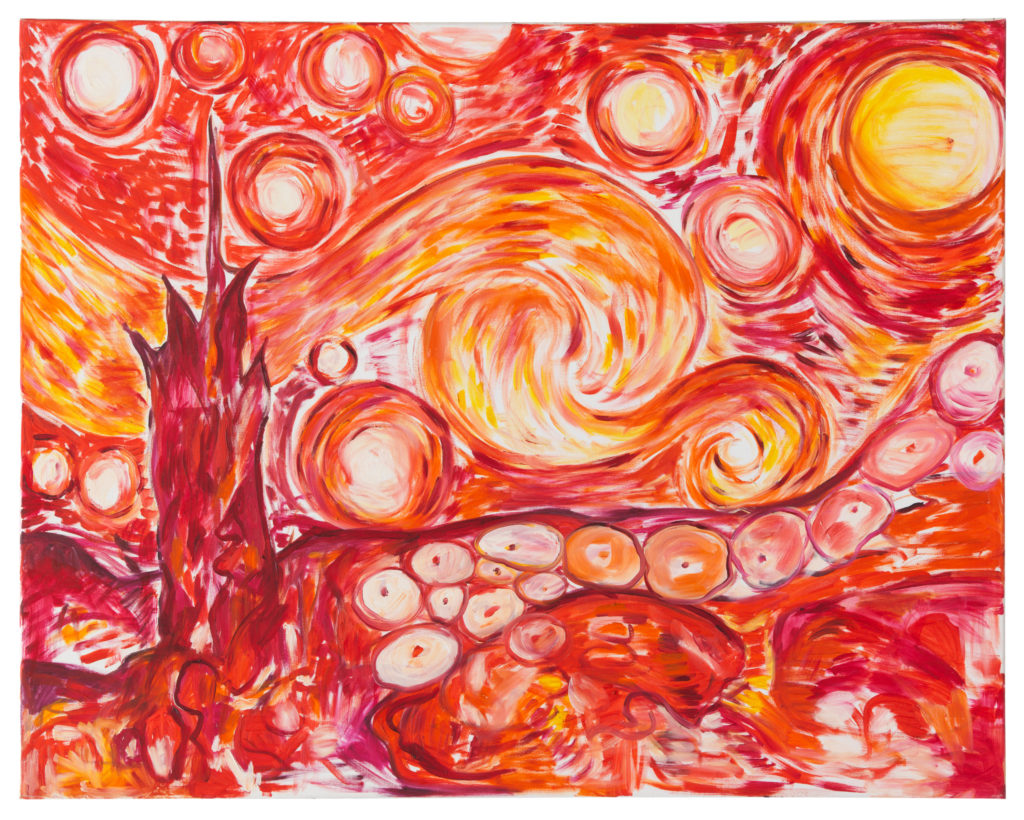
Jutta Koether, Starry Night II (1988). © Jutta Koether. Courtesy Lévy Gorvy and Galerie Buchholz.
But what about artists you represent who don’t seem to have much to do with one another? Dan Colen doesn’t have much in common with Adrian Piper, for example.
I think Dan is a relevant artist who had enormous success very young, and that is incredibly difficult to manage. He’s quite an illustration of our times. He has a real painterly practice, and a strong knowledge of art history. But I think in that early enormous success, it was hard to manage—he was in his twenties—[and] he got a bit carried away by it and maybe got lost during the success. He lost some of the “bad boy” [image]. Working with him has been really interesting, because I have no doubt that our exhibition in New York [“Mailorder Mother Purgatory” from May 2018] was one of his [best] shows. It had a lot of constraints, a lot of discipline. The same existed for the show at Damien Hirst’s space in London [“Sweet Liberty” at Newport Street Gallery in fall 2017]. That show broke so many boundaries and one could see that there was a true painter and a true sculptor there.
In between 20 and 30, who can be absolutely disciplined and pure? These are the years of exploration, not maturity. We are seeing this with more artists from this generation who found that success in their twenties, and they become open to growing up. I think Dan is in that beautiful transition moment. After Richard Prince, he and Nate Lowman are the two really profound New York artists to me.
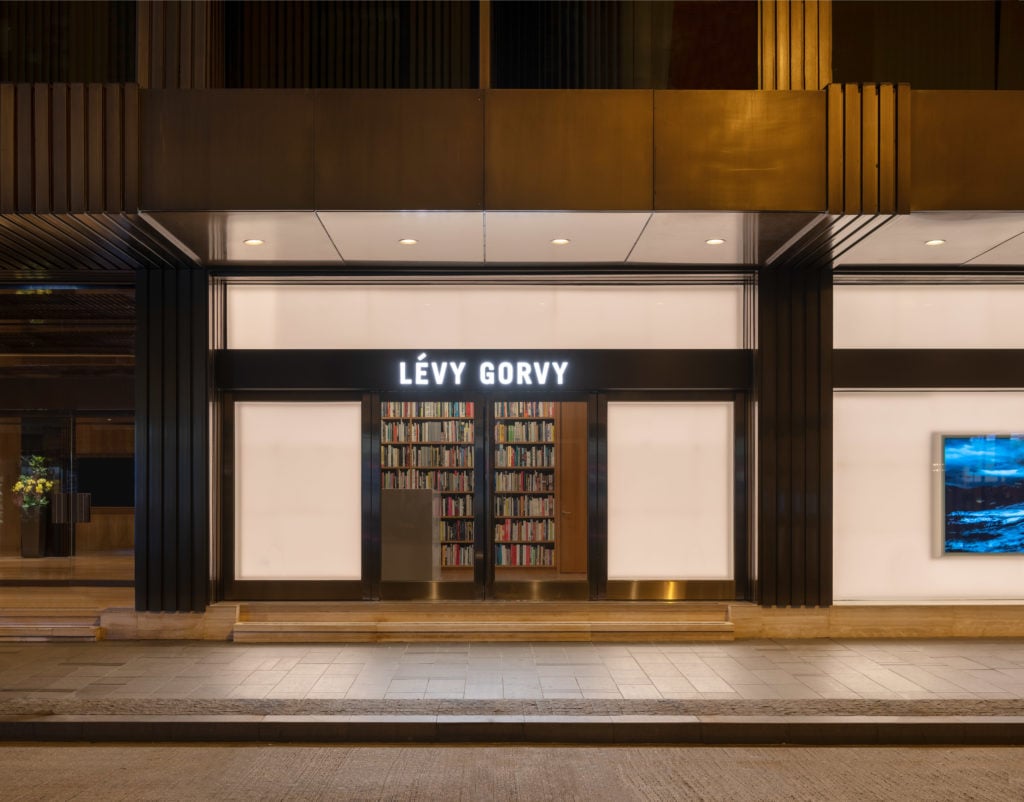
Lévy Gorvy in Hong Kong. Photo: Kitmin Lee.
Your business partner Brett Gorvy said that the aim with your Hong Kong gallery was to operate a bit like a German kunstverein, a kind of experimental center with a younger perspective. How does that youthful ideal fit into your bigger plans?
I think that synergy of our team is what feels young, though Brett and I both have decades of experience in our field. We are not in this business with an ego, but with a mission. When you have a mission, a main quality of that is agility. We are like an agile start-up: we can explore, we can make mistakes, we can be avant-garde, and we have the courage to take risks that we feel are in harmony with the times that we are in. And whether it’s less-is-more, smaller exhibitions, curated exhibitions, whether its installations or pop-ups, poetry, dance, or music, we try to create a place that fosters creation. Maybe it’s easier for us because we don’t have one voice, one identity, or one rule to go by.
You have hosted intimate events like poetry readings at the gallery. What does this add to exhibitions? How do intimate projects like these generate a return on investment?
These events are truly for anyone that is interested and so we have collectors coming, but we have a lot of artists and writers coming, too. Our poetry readings are incredibly well-attended and if you look at the “Warhol Women” show, we had the most extraordinary attendance we have ever had. We had a beautiful diversity in terms of age, nationality.
It is so exciting, and of course, we are a commercial entity. But what we truly hope is that people will enjoy what we do and participate in the art world and the gallery world. Our exhibitions often don’t have everything for sale.
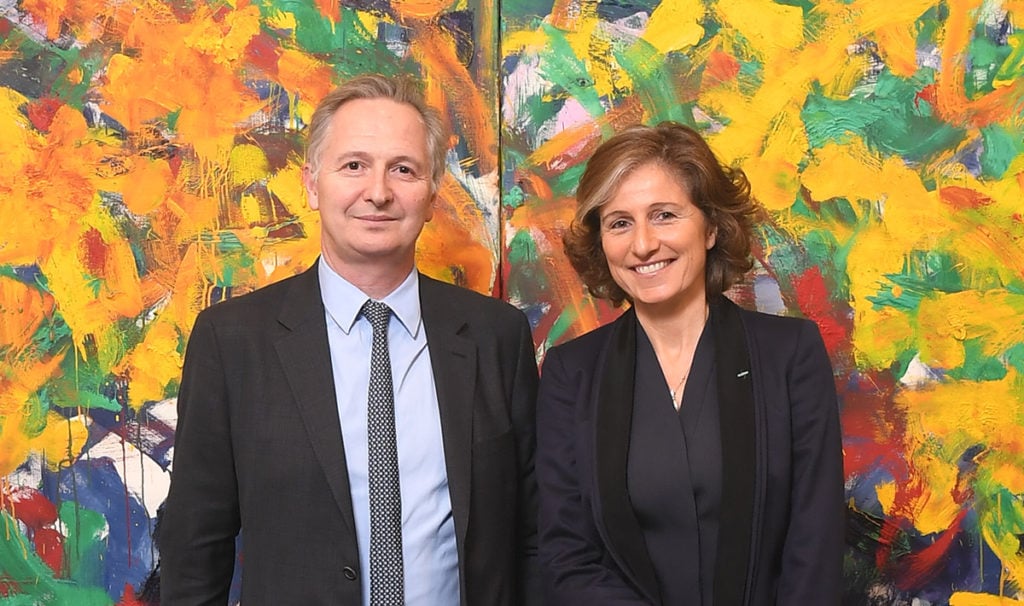
Brett Gorvy and Dominique Lévy. Photo: Ben Wan.
This was the first year Art Basel introduced a tiered pricing structure for its booths. You were at the New York Times conference in 2018 where David Zwirner first proposed the idea. What did you think about it?
The idea of a successful gallery coming to patronize or sponsor a younger gallery sounds wrong to me. I feel a gallery has its own creative history, interests. If that means a very small booth, then it is a very small booth. The beauty of art fairs, I think, is to treat these interesting small booths as well as they would treat a big established gallery. In other words, you should have a large and established gallery with ten or fifteen years’ track record next to a completely new, young, and exciting program because it’s fresh. To me, its not about the scale of the booth, nor is it about the scale of the gallery, it’s about the content. I am hoping that art fairs and galleries will all focus on content and therefore be excited and not be threatened or feel diminished if we are next to a completely unknown gallery. It’s not about money, although the money is important, but it is also about doing the best that you can do.
It’s like I always say to my collectors that, if you are going to buy an artist, look at what you can afford to reach the excellence in that artist, then do it. But if you are going to buy a mediocre work by Picasso to have a Picasso, then why wouldn’t you buy the best from another artist? I think this is the same with the logic of booths. Show the best you can, and the job of an art fair is to give the platform for that.
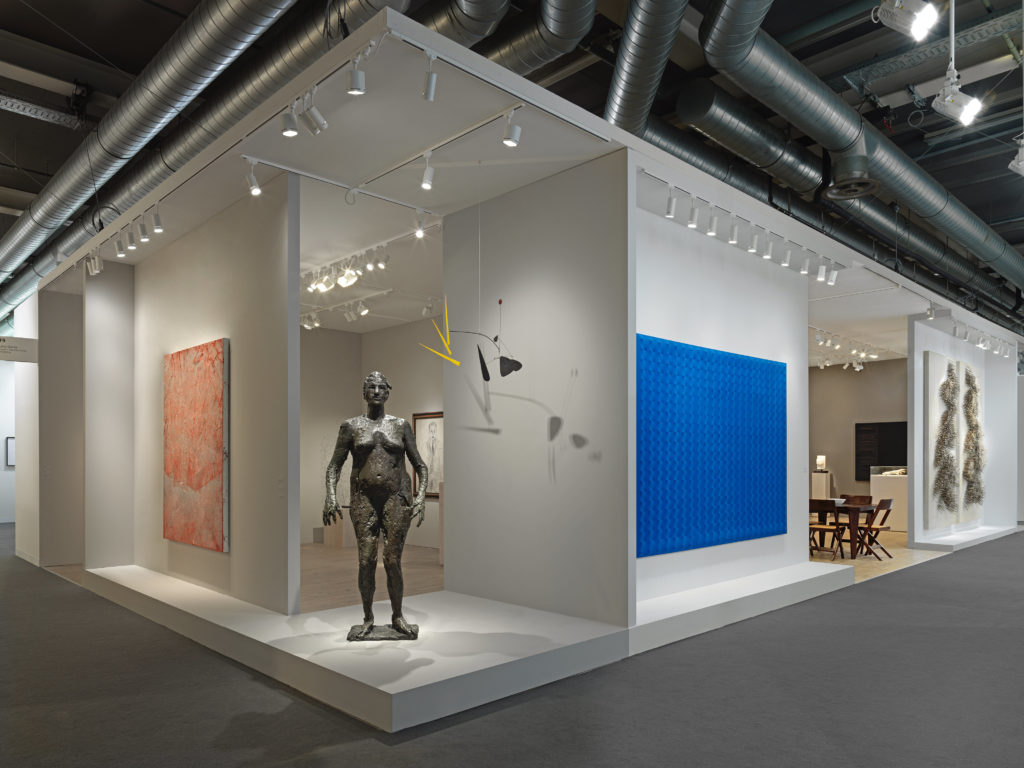
Installation view, Lévy Gorvy at Art Basel 2019. Photo: Stefan Altenburger. Courtesy Lévy
Gorvy.
So would you like to see more content-driven sections in the future, rather than sections with emerging market galleries relegated to their own area?
Yes, I think so. I think there are so many different ways to see art fairs that can be surprising and exciting. Our job is to come and present our identity, our vision, and put our best foot forward. The rest is the job of the art fair, so I thought that it was not such a good statement to think we could come out and patronize these young galleries.
What fairs are exciting for you right now?
I am very excited when I go to fairs like TEFAF, because I find the fair is so rich and full of surprise. Collectors can see Old Masters next to archaeology next to furniture. It’s just give you a fresh and round perspective.
I also love Art Basel, because when I go there I know that I am going to discover a ton of new things, because there are so many galleries I do not yet know in Statements and Unlimited. Again, it goes back to the identity of a fair. We are cutting the number of fairs we do only because we can’t do them all as well. Art Basel has their discipline and structure, so we will continue do all three. But we cut Frieze fairs, for example. I feel that Frieze is a fair that lost its identity by wanting to do it all. It’s Frieze, and Frieze Masters, and now Los Angeles. The same goes for the Armory Show in New York, which I feel is just piggybacking on Independent, which is a great fair. By diversifying without a strong identity, you can lose that identity you have. We are looking to be where we feel at home.